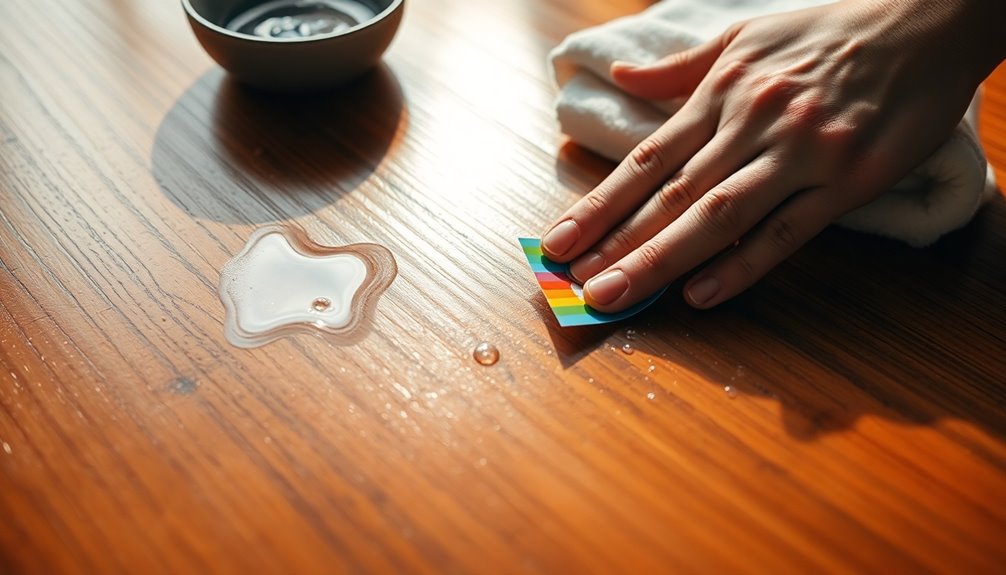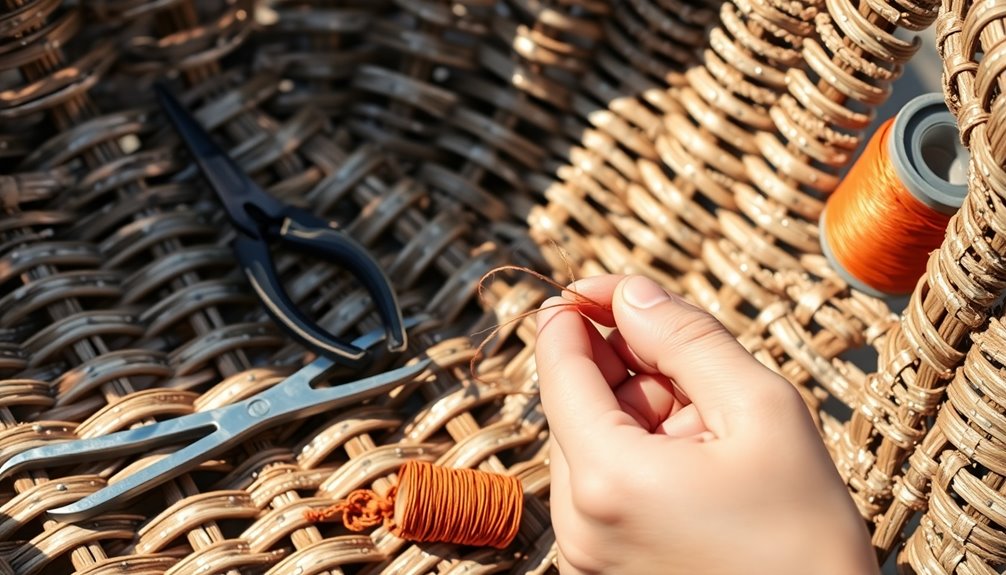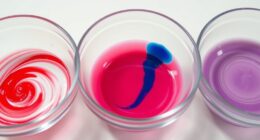You can remove stickers from furniture easily with household items. Start by applying heat with a hair dryer for about 30 seconds to soften the adhesive. Use a plastic card to gently scrape it off. If that doesn’t work, try rubbing alcohol; soak a cloth and let it sit on the sticker for 30 minutes, then wipe clean. For stubborn stickers, cooking oil or white vinegar can also help break down the glue. Finally, give your furniture a wipe with warm soapy water and consider refining the finish with wood polish. There’s more helpful techniques ahead. Additionally, if you notice any lingering marks after sticker removal, you can learn how to remove furniture marks using a simple mixture of baking soda and water. Create a paste, apply it to the affected area, and gently rub in a circular motion until the mark fades. Always test any solution on an inconspicuous area first to ensure it does not damage the finish of your furniture.
Key Takeaways
- Use a hair dryer on low heat to soften the adhesive before gently peeling off the sticker.
- Apply rubbing alcohol or white vinegar to the sticker, let it soak, and then scrape off the residue.
- For stubborn stickers, try cooking oil or peanut butter to dissolve the adhesive before removal.
- Always test any method on a small, inconspicuous area to ensure it won't damage the furniture finish.
- Clean the area with warm soapy water and consider applying wood polish to restore shine after removal.
Common Household Methods
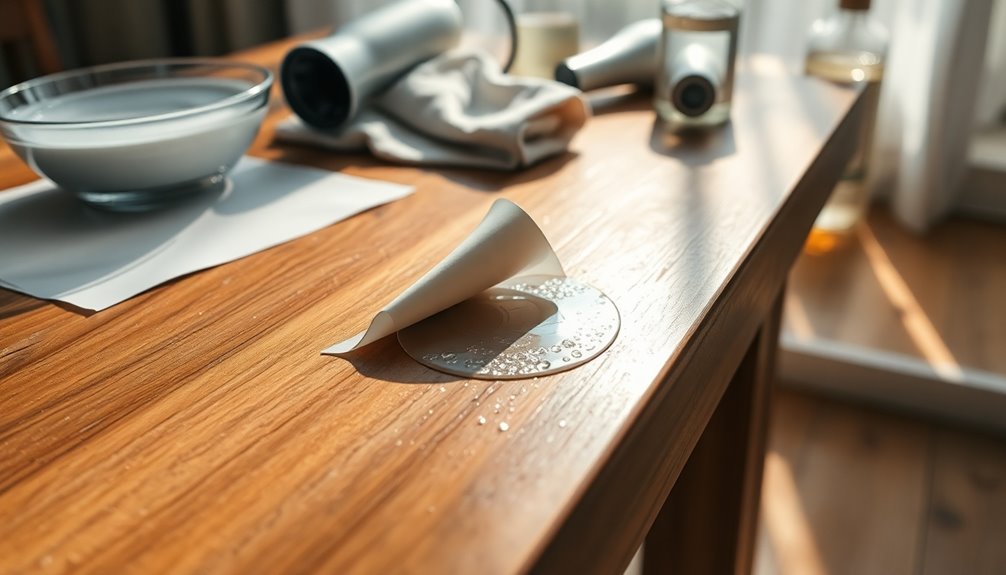
When it comes to removing stickers from furniture, there are several common household methods you can try. One effective approach is using heat. Grab a hair dryer, set it to low heat, and aim it at the sticker for about 30 seconds. This warms the adhesive, making it easier to peel off. If the sticker's still stubborn, don't hesitate to reheat it. Just be sure your furniture can handle the heat!
Another method involves oil. Simply apply cooking oil directly to the sticker and let it sit for 10-15 minutes. This softens the adhesive, allowing you to scrape it off with a credit card or plastic scraper. For wood surfaces, a soapy rag can help wipe away any residue. Cooking oil is particularly effective for wood furniture, as it helps lift the sticker while protecting the surface.
You can also use a hot water and dish soap mixture. Soak a rag in this solution, place it on the sticker, and wait for the adhesive to soften before scraping it away. For tough spots, try soaking the item in hot soapy water if it's glass. Lastly, white vinegar works wonders—just soak a rag in it, apply to the sticker, and scrape once the adhesive loosens.
Alcohol-Based Solutions
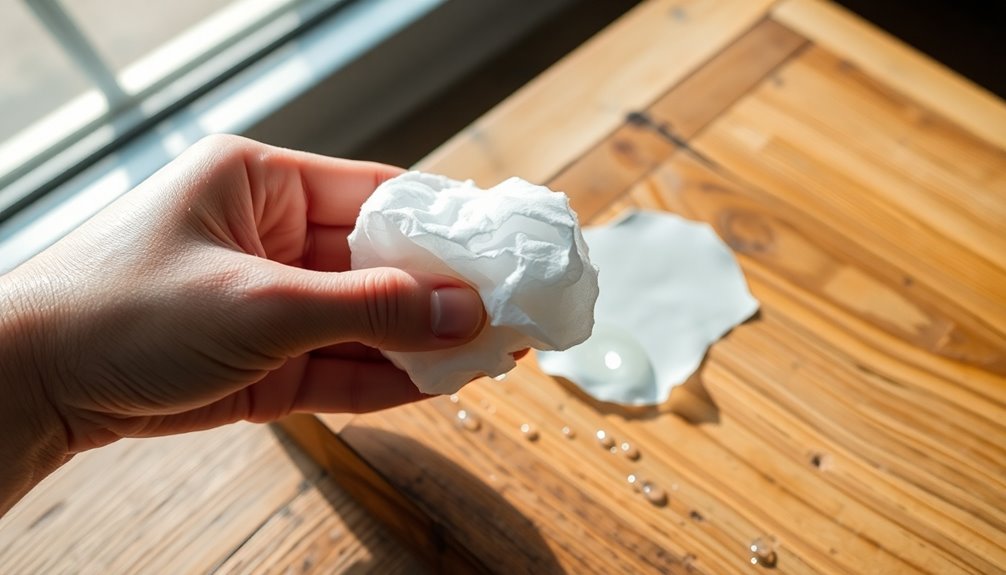
If common household methods don't do the trick, alcohol-based solutions can be highly effective for removing stickers from furniture. Start by soaking a paper towel or cloth in rubbing alcohol, then apply it to the sticker. Let it sit for about 30 minutes to break down the adhesive. Afterward, gently rub the sticker in circular motions with the cloth until it dissolves and detaches from the wood. If the sticker's stubborn, repeat the soaking and rubbing process as necessary. Patience and testing are key to achieving the best results while preventing potential damage.
Always test the rubbing alcohol on an inconspicuous area first to ensure it won't damage the wood's finish. Make sure you work in a well-ventilated space, as the fumes can be strong, and keep the alcohol away from flames since it's flammable.
If you prefer alternatives, nail polish remover or clear vodka can also work, but again, test them first. After removing the sticker, wipe the area with warm soapy water to eliminate any residue, then dry thoroughly. Don't forget, a rubber pencil eraser or baby oil can help with any remaining adhesive. Ensure the surface is dry before applying any further treatments.
Vinegar Technique
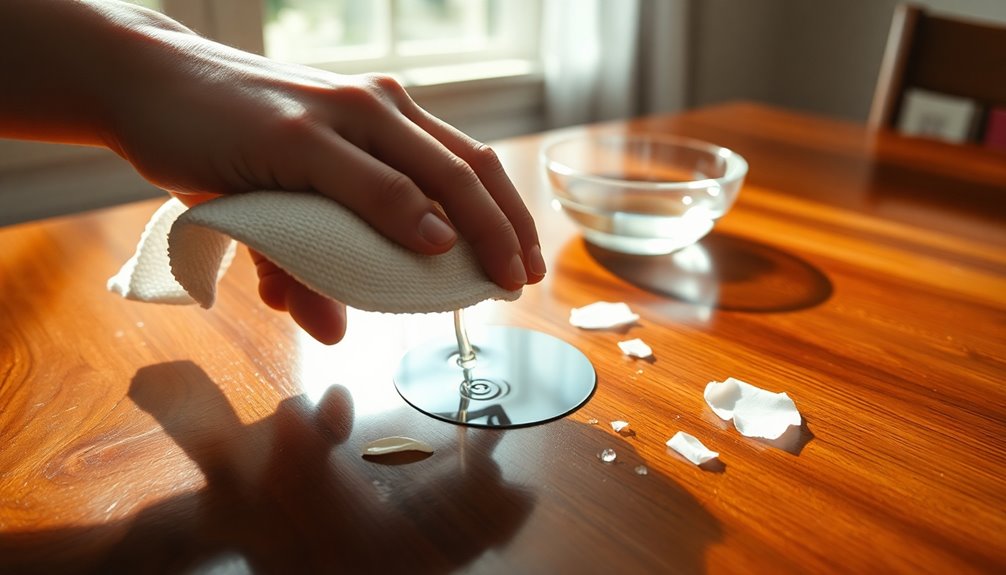
The vinegar technique is a simple and effective way to remove stickers from furniture without harsh chemicals. Start by soaking a rag or paper towel in distilled white vinegar. Cover the sticker or the sticky area with the vinegar-soaked rag and let it soak for about 5 to 30 minutes, depending on how stubborn the sticker is. Once it's softened, use a cloth or a credit card to scrape away the sticker gently.
If you're dealing with painted wood, stick to white vinegar to avoid damage. You can heat the vinegar in the microwave for about 30 seconds for better results. Let it sit on the sticker until it's easy to peel off, then clean the surface with a damp rag. Removable stickers feature low-tack adhesive, allowing for easy and clean removal, which makes this technique particularly effective.
For other surfaces like metal and glass, spray white vinegar directly onto the sticker and let it sit for around 10 minutes. Always test a small area first to ensure the surface isn't damaged. If the sticker doesn't come off completely, repeat the process. Finish up by wiping the area with soapy water to remove any remaining residue, leaving your furniture sticker-free and clean.
Oil-Based Removers
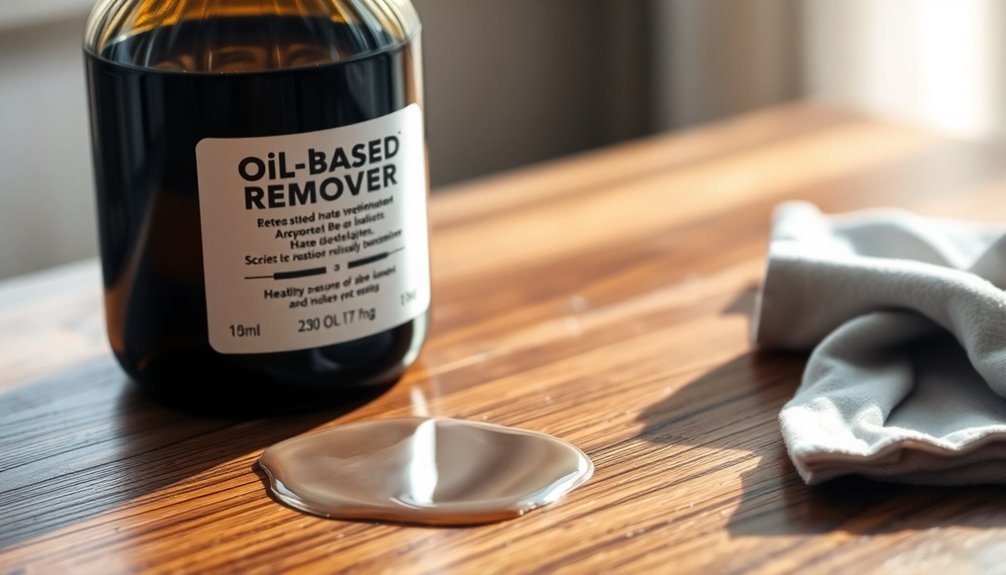
Oil-based removers can really come to the rescue when you're tackling stubborn sticker residue on furniture. You have several options, like olive oil, cooking oil, peanut butter, and even WD-40. To use olive oil, drizzle a small amount onto a soft cloth and rub gently in circular motions. This method effectively dissolves adhesive without damaging wood finishes. For cooking oil, rub it directly into the sticker, let it sit for 10–15 minutes, then scrape away the residue with a plastic scraper. If you prefer peanut butter, apply a thick layer to the sticker and wait about an hour before scraping. Its high-fat content is great for dissolving adhesive, especially on plastic and glass. WD-40 works well on metal surfaces—just spray it on, let it sit for a few minutes, and then wipe away the residue.
When using these oil-based removers, it's essential to consider potential damage to wood from any residue left behind. After using any oil, wipe the area with a clean cloth to remove excess and follow up with a damp cloth to ensure no residue remains. Always test a small area first to avoid damaging your furniture. Happy cleaning!
Material-Specific Approaches
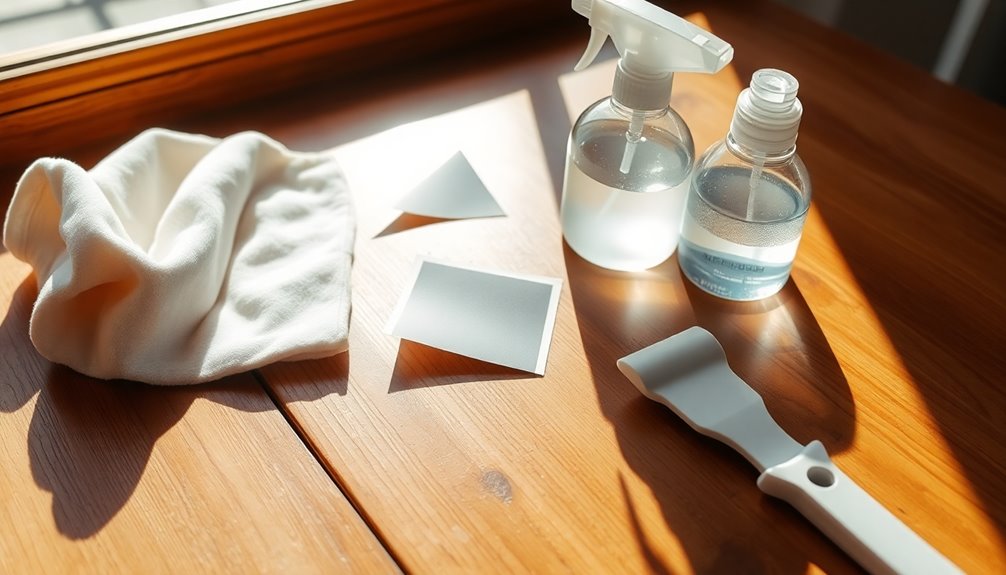
When it comes to removing stickers, different materials require specific approaches for effective results. For wood furniture, start by applying heat with a hair dryer or heat gun for 30-60 seconds to soften the adhesive. Peel the sticker off slowly with a plastic card, repeating the heat application if needed. If any residue remains, use rubbing alcohol or acetone on a cotton ball to dissolve it. For stubborn spots, fine-grit sandpaper can help, but be cautious. The adhesive on stickers can bond tightly to wood fibers over time, making careful removal essential.
On metal furniture, consider using WD-40. Spray it on the sticker, let it sit for five minutes, and wipe it away with a rag. Heat can also work here; just apply it briefly to loosen the adhesive before peeling.
For glass surfaces, pour hot water mixed with dish soap directly onto the sticker. Let it sit for a few minutes, then scrub with a wet rag. If residue lingers, rubbing alcohol or nail polish remover can help lift it away. Whatever the material, always finish by cleaning the area to ensure no adhesive or cleaning agents remain.
Additional Tools
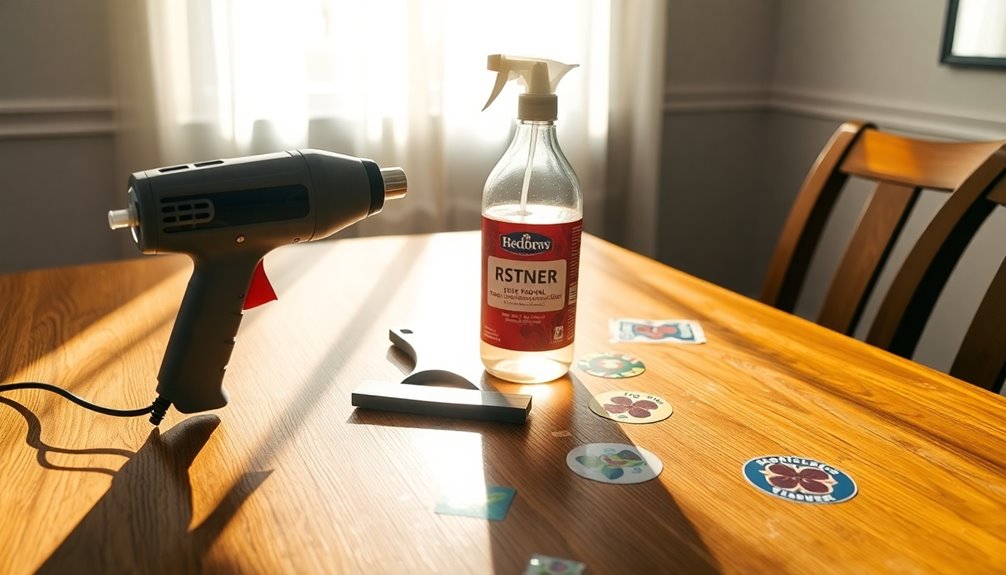
While traditional methods are effective for removing stickers, having the right tools can make the process even easier and more efficient. Consider using specialized tools like the YelloBlade film removal squeegee, which features a sharp edge to remove stubborn stickers and adhesive without leaving residue. If you're dealing with larger areas, the RapidRemover lever mechanism rolls up adhesive in one piece, cutting down on mess. Additionally, using specialized tools like these can greatly enhance your efficiency during removal tasks.
Household items also come in handy. A hair dryer can soften adhesives, making stickers easier to peel off. Pair it with a razor blade for a gentle lift. A credit card is great for scraping stickers off wood surfaces without scratches, while a microfiber cloth helps wipe away leftover residue.
Don't forget about some useful chemicals. Rubbing alcohol and acetone effectively dissolve adhesive, especially on wood. For a gentler approach, white vinegar can soak into stickers, loosening their grip.
Lastly, you might find some unconventional options, like peanut butter or mayonnaise, surprisingly effective. Using these additional tools will streamline your sticker removal process, ensuring your furniture looks pristine in no time.
Tips for Success
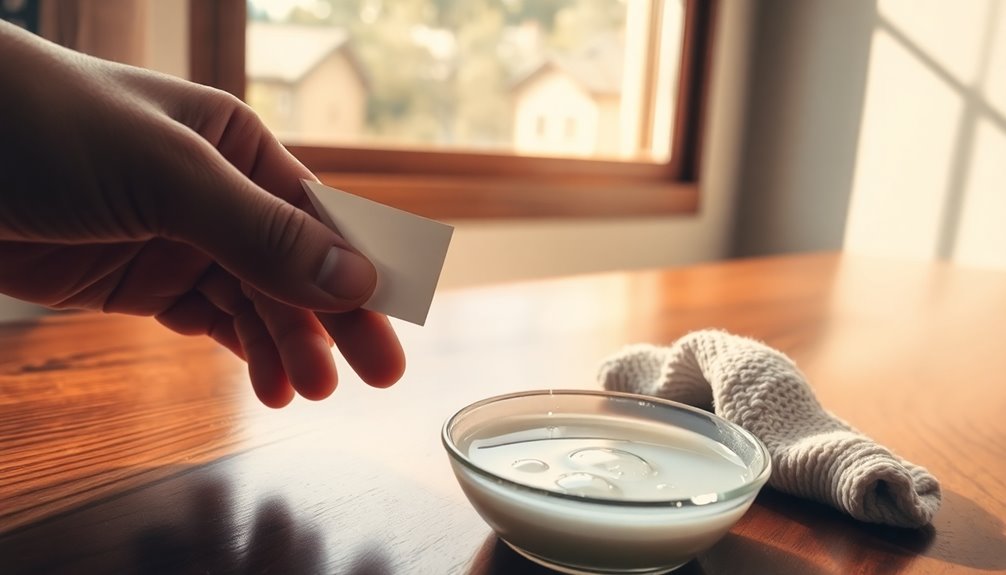
To successfully remove stickers from furniture, follow these essential tips that can save you time and prevent damage. Start by applying heat with a hair dryer or heat gun set to low. Keep the device 3-4 inches from the sticker, moving it back and forth for 30-60 seconds until the adhesive softens. If you encounter resistance while peeling, reapply heat as needed, being careful not to harm the wood surface. This method is particularly effective because it avoids damage to various furniture types.
Once the sticker is pliable, use a plastic card or scraper to lift a corner gently. Hold the tool at a low angle to avoid scratching. Once you've lifted the corner, peel the sticker off slowly with your fingers. For non-wood surfaces, a razor blade can help but use it cautiously.
After removing the sticker, treat any sticky residue with rubbing alcohol or acetone on a soft cloth. For stubborn remnants, soak a rag in white vinegar or soapy water. Finish by cleaning the area with warm soapy water, then allow it to air dry. Finally, consider applying wood polish to restore shine and protect against future stickers.
Frequently Asked Questions
Will Removing Stickers Damage My Furniture's Finish?
Removing stickers can potentially damage your furniture's finish, but it largely depends on the materials involved and the methods you use. If you're not careful with harsh chemicals or abrasive tools, you might scratch or discolor the surface. Always test any removal technique on a small, hidden area first. By choosing gentle methods and avoiding corrosive materials, you can minimize the risk of damage and keep your furniture looking great.
Can I Use a Heat Gun Instead of a Hair Dryer?
You can use a heat gun instead of a hair dryer, but you need to be cautious. Heat guns generate more intense heat, which can damage surfaces if you're not careful. Keep the heat gun a few inches away and don't focus on one spot for too long. If you're unsure, a hair dryer is generally safer and less likely to cause damage. Always test a small area first to ensure it's safe.
What Should I Do if the Sticker Tears?
If the sticker tears, don't panic. Reapply heat from a hair dryer to the remaining parts to loosen the adhesive further. You can also re-soak the torn area with vinegar or cooking oil to help dissolve the adhesive. If needed, gently scrape away the leftover pieces using a plastic scraper or credit card. Finally, clean any residue with a soapy rag or vinegar to ensure the surface looks great again.
How Can I Prevent Sticker Residue in the Future?
To prevent sticker residue in the future, designate specific areas for stickers, like a canvas or sticker book, and set clear rules for their use. Opt for removable stickers with gentle adhesives, and always clean surfaces before applying them. Consider using a light coat of wax on wood to make removal easier later. Regularly check for stickers and remove them promptly to avoid buildup. With these steps, you'll keep surfaces looking great!
Are There Any Eco-Friendly Adhesive Removers Available?
Yes, there are several eco-friendly adhesive removers available. You can try GreenEZ Furniture Strip & Clean, which is made from soybean oil and is non-caustic. Another option is BLUE BEAR® Ickee Stickee Unstuck®, a biodegradable choice that's free from harsh chemicals. If you prefer DIY solutions, mix baking soda with coconut oil or use white vinegar in a spray bottle to break down adhesives effectively. Always patch-test first to ensure your surfaces are safe.
Conclusion
Removing stickers from furniture doesn't have to be a hassle. By trying out common household methods like alcohol, vinegar, or oil-based removers, you can effectively tackle sticky residue. Remember to consider the material of your furniture and use the right approach for the best results. With the right tools and techniques, you'll restore your furniture's look in no time. Don't forget to be patient and gentle to avoid any damage. Happy cleaning!
